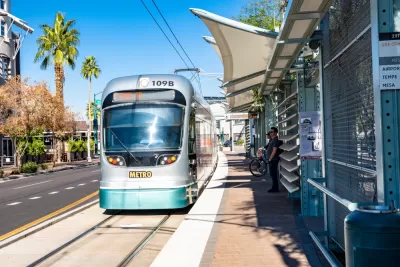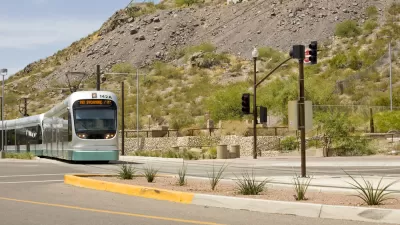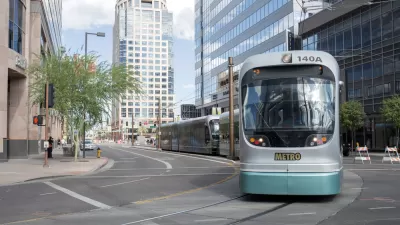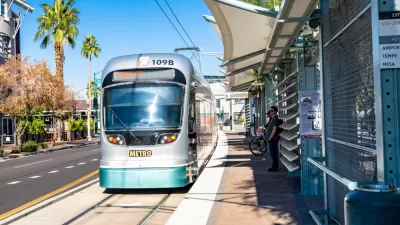Three votes and several long-range transit plans should have sufficiently insulated transit plans in Phoenix from obstructionist tactics, according to the opinion piece.

J. Doug Pruitt, former chairman and CEO of Sundt Construction, former national president of AGC of America (2009), and served as chairman of the Yes on 400 Committee in 2004, bolsters the case for funding and building the vision established by transit planners in the Phoenix area over the years:
More than 20 years of transportation planning and investment have made the valley one of the most attractive places to start a family and build a business. Our quality of life, cost of living, improved air quality and reduced congestion are why we are one of the fastest growing and most attractive markets in the entire country.
Pruitt details the voter approved funding initiatives and transit plans going even further back, to the 1985 Regional Transportation Plan. The case: that Phoenix residents want balanced public transit investments, and planners have done a good job delivering on the envisioned projects.
But recent months have seen a groundswell of resistance to transit investment in the Phoenix area. Plans to extend light rail have encountered stiff resistance and the City Council upended funding plans for $30 billion approved by voters in 2015 to shift funding away from light rail.
Pruitt cites that latter action as an example of the transit opposition emerging in recent months. But there are also transit proponents pushing back. The Arizona Chapter of the Associated General Contractors of America has filed a lawsuit to overturn that decision to defund light rail.
FULL STORY: Light rail foes want to undo 3 public votes and 20 years of transit planning. Don't let them

Study: Maui’s Plan to Convert Vacation Rentals to Long-Term Housing Could Cause Nearly $1 Billion Economic Loss
The plan would reduce visitor accommodation by 25,% resulting in 1,900 jobs lost.

Alabama: Trump Terminates Settlements for Black Communities Harmed By Raw Sewage
Trump deemed the landmark civil rights agreement “illegal DEI and environmental justice policy.”

Why Should We Subsidize Public Transportation?
Many public transit agencies face financial stress due to rising costs, declining fare revenue, and declining subsidies. Transit advocates must provide a strong business case for increasing public transit funding.

Paris Bike Boom Leads to Steep Drop in Air Pollution
The French city’s air quality has improved dramatically in the past 20 years, coinciding with a growth in cycling.

Why Housing Costs More to Build in California Than in Texas
Hard costs like labor and materials combined with ‘soft’ costs such as permitting make building in the San Francisco Bay Area almost three times as costly as in Texas cities.

San Diego County Sees a Rise in Urban Coyotes
San Diego County experiences a rise in urban coyotes, as sightings become prevalent throughout its urban neighbourhoods and surrounding areas.
Urban Design for Planners 1: Software Tools
This six-course series explores essential urban design concepts using open source software and equips planners with the tools they need to participate fully in the urban design process.
Planning for Universal Design
Learn the tools for implementing Universal Design in planning regulations.
Smith Gee Studio
Alamo Area Metropolitan Planning Organization
City of Santa Clarita
Institute for Housing and Urban Development Studies (IHS)
City of Grandview
Harvard GSD Executive Education
Toledo-Lucas County Plan Commissions
Salt Lake City
NYU Wagner Graduate School of Public Service





























